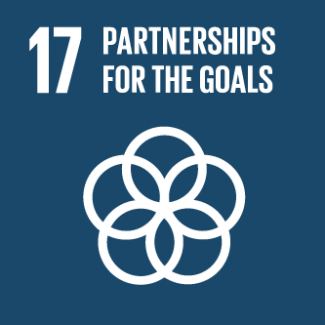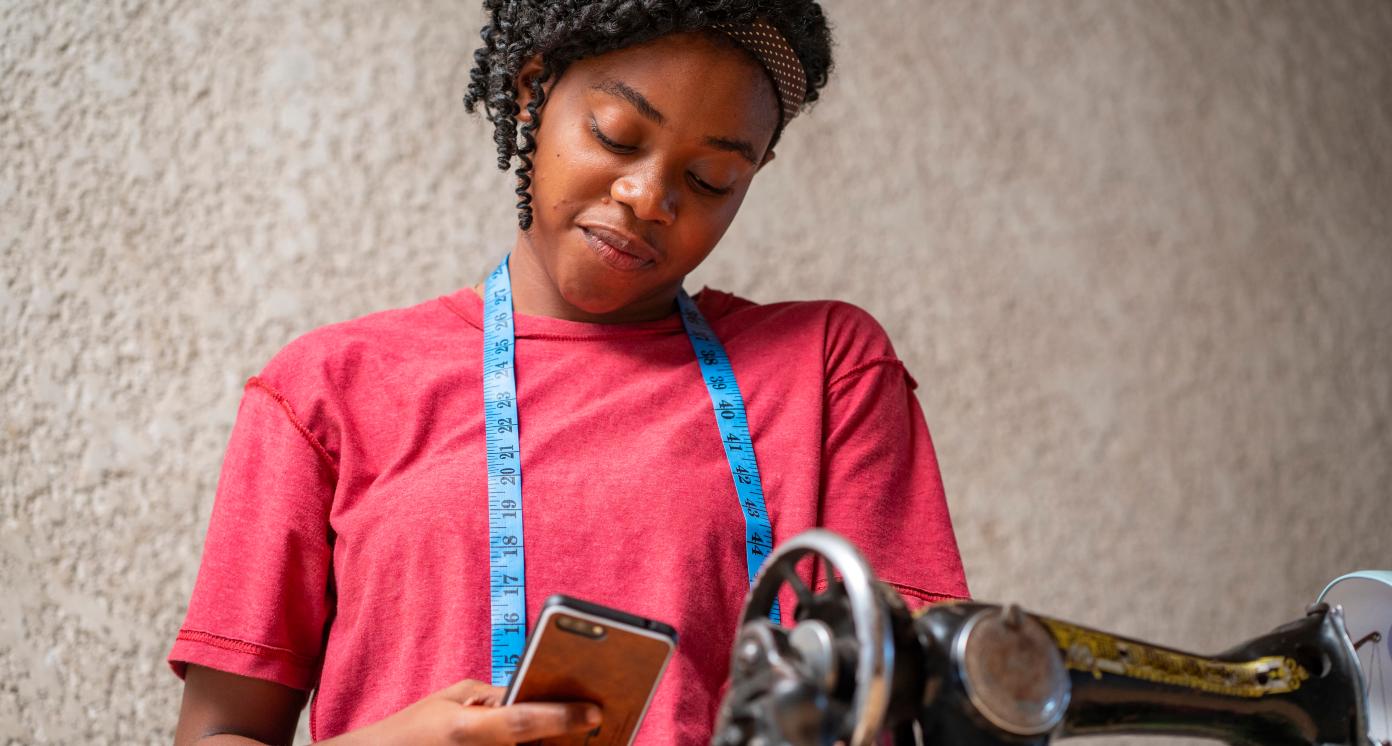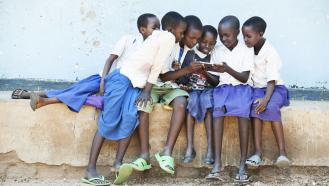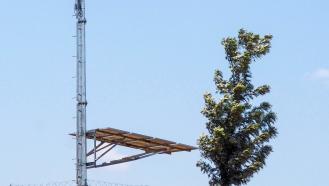Mobile internet hotspots






Business Model Description
Provide affordable mobile internet in rural areas through mobile hotspot with business advertisement services.
Expected Impact
Enhance access to information and knowledge especially for rural populations through mobile hotspots financed through commercial advertisements.
How is this information gathered?
Investment opportunities with potential to contribute to sustainable development are based on country-level SDG Investor Maps.
Disclaimer
UNDP, the Private Finance for the SDGs, and their affiliates (collectively “UNDP”) do not seek or solicit investment for programmes, projects, or opportunities described on this site (collectively “Programmes”) or any other Programmes, and nothing on this page should constitute a solicitation for investment. The actors listed on this site are not partners of UNDP, and their inclusion should not be construed as an endorsement or recommendation by UNDP for any relationship or investment.
The descriptions on this page are provided for informational purposes only. Only companies and enterprises that appear under the case study tab have been validated and vetted through UNDP programmes such as the Growth Stage Impact Ventures (GSIV), Business Call to Action (BCtA), or through other UN agencies. Even then, under no circumstances should their appearance on this website be construed as an endorsement for any relationship or investment. UNDP assumes no liability for investment losses directly or indirectly resulting from recommendations made, implied, or inferred by its research. Likewise, UNDP assumes no claim to investment gains directly or indirectly resulting from trading profits, investment management, or advisory fees obtained by following investment recommendations made, implied, or inferred by its research.
Investment involves risk, and all investments should be made with the supervision of a professional investment manager or advisor. The materials on the website are not an offer to sell or a solicitation of an offer to buy any investment, security, or commodity, nor shall any security be offered or sold to any person, in any jurisdiction in which such offer would be unlawful under the securities laws of such jurisdiction.
Case Studies
Country & Regions
- Ghana: Upper West
- Ghana: Savannah
- Ghana: Bono East Region
- Ghana: Ashanti
- Ghana: Eastern
- Paraguay: Central
- Ghana: Northern
Sector Classification
Technology and Communications
Development need
There are many challenges associated with achieving SDG 9 - Industry, Innovation and Infrastructure. Statistics highlight affordability and the quality of the internet as the key challenges. However, Ghana is on track to achieve two indicators: population using the internet (39% in 2017) and mobile broadband subscriptions (92% in 2018).(III)
Policy priority
The Medium-Term Policy recognizes ICT (information and communications technology) in Ghana as a key economic driver. The sector recorded significantly higher growth than others, rising by around 30% annually between 2009-2014 and reaching 10.6% of gross domestic product (GDP) in 2016.(I) The government is planning to expand national ICT infrastructure by collaborating with private sector and establishing Ghana as a regional ICT hub.(II)
Gender inequalities and marginalization issues
Ghana's gender gap in basic internet access was only 5.8%, compared with the African regional average of 49.6%. However, a wider gender gap occurs in meaningful connectivity, reaching 14%.(38)
Key bottlenecks
The main sector challenges include: black spots in infrastructure access, ICT skill gaps, unreliable access to energy, high cost of internet, lack of ICT startup incubators, inadequate regulations, poor cybersecurity, and poor access to electronics (computers, laptops).
Internet Media and Services
Pipeline Opportunity
Mobile internet hotspots
Provide affordable mobile internet in rural areas through mobile hotspot with business advertisement services.
Business Case
Market Size and Environment
4.4 million people in Ghana require 3G internet coverage.
4.44 million people in Ghana are not covered by 3G internet, showcasing an opportunity for market development.(35)
In 2020, 14.76 million of Ghana's estimated 31.4 million people were internet users. This is 1 million more users (up 7.5%) than in 2019. (25), (32)
46.1% Ghanaians own a smartphone(29), and 40.8% of the population conduct mobile money transactions(30).
Indicative Return
15% - 20%
Benchmark statistics for telecommunication services (including internet) estimate a return rate of 18% -22%. This rate is a benchmark calculated as a cost of equity that includes a country risk premium, reflecting an average return required by investors.(31)
Investment Timeframe
Medium Term (5–10 years)
Given the infrastructure and capital expenditure requirements, as well as the required large-scale application, the business model is expected to require a medium to long term timeframe, depending on its specific orientation.
Market Risks & Scale Obstacles
Business - Supply Chain Constraints
Market - uptake barrier due to privacy and data security concern
Impact Case
Sustainable Development Need
Digitization is considered to be a major driver of economic growth. It has a transformative impact and it is a significant factor for sectoral development. A mobile phone business model can be applied e.g. for providing electric power to off-grid homes, agricultural innovation, education and addressing teacher shortages as well as healthcare delivery. (V)
The Ghana Investment Promotion Centre identified the need for ICT (information and communications technology) facilities and infrastructure to be deployed nationwide. This includes providing software, extending the broadband network and providing broad computer access for rural students.(1)
Gender & Marginalisation
Underprivileged communities, especially students from poor backgrounds, suffer from access barriers to information and knowledge.
Expected Development Outcome
Improved internet connectivity, improved human capital development due to improved access to information and learning opportunities
Facilitated technological innovations and digital literacy, accelerated digital transformation of the country
Decreased asymmetry of information and informational gaps among populations
Gender & Marginalisation
Reduced digital gender gap
Reduced inequalities in digital access
Primary SDGs addressed



Secondary SDGs addressed



Directly impacted stakeholders
People
Gender inequality and/or marginalization
Corporates
Public sector
Indirectly impacted stakeholders
Corporates
Outcome Risks
Possibility of cybercrime and phishing, because mobile hotspots providing wifi services are more vulnerable to hacker attacks than private cable connections (11)
Impact Classification
What
Provision of affordable mobile internet, which contributes to digital inclusion and results in access to information, reduced transaction costs, and efficient and effective services provision.
Who
Rural communities, MSMEs (micro, small and medium enterprises), farmers, agribusinesses, national education system, and actors along the trade value chain who can be reached due to better access to the internet.
Risk
Inappropriate pricing strategy may be an obstacle for a wide scale roll out of the project. Moreover, potential privacy and confidentiality related risks need to be addressed.
Impact Thesis
Enhance access to information and knowledge especially for rural populations through mobile hotspots financed through commercial advertisements.
Enabling Environment
Policy Environment
Coordinated Programme of Economic and Social Development Policies (CPESDP) 2017-2024: This programme announces support for digital infrastructure development and mainstreaming ICT (information and communications technology) in the public sector to position the country as a regional tech hub.(6)
National Science Technology and Innovation Policy 2017-2020: This policy has the goal of acquiring skills in high technology areas and integrating them into known technologies. It aims to promote innovation within the educational system (ICT-driven education) and all sectors of the economy.(7)
National Broadband Policy and Implementation Strategy 2012: This strategy aims to develop world-class ICT infrastructure in Ghana and increase the overall capacity for the transmission of data, voice, video and internet services nationwide.(8)
ICT for Accelerated Development Policy (ICT4AD) 2003: This policy aims to stimulate, promote and encourage innovation within the ICT sector and promote growth within the industry.(9)
Financial Environment
Financial incentives: Capital allowances are granted on depreciable assets such as computers and data handling equipment together with peripheral devices.(34)
Fiscal incentives: Tax losses can be carried forward for 5 years for priority sectors, including ICT.(33)
Regulatory Environment
The National Communications Authority Act, 2008 (Act 769): This Act establishes the National Communications Authority (NCA) as the central body to license and regulate communications activities and services in the country. Registration with the NCA will be required for businesses importing telecommunications equipment, including servers, cellular phones, fax machines, cordless phones or radio equipment.(17)
The Electronic Communications Act of Ghana, 2008 (Act 775) and Electronic Communications Amendment Act, 2009 (Act 786): These Acts provide the regulations for electronic communication including licensing and frequency authorization.(18), (19)
The National Information Technology Agency, 2008 (Act 771): This Act establishes an agency to regulate Ghana's ICT sector in Ghana. (20)
The Communications Service Tax Act, 2008 (Act 754) and Communications Service Tax (Amendment) Act, 2019 (Act 998): These Acts impose a communications service tax (CST), which is payable by users of electronic communication services provided by entities authorized under the Electronic Communications Act, 2008 (Act 775). Consequently, companies engaged in providing electronic communications service, as defined by the Communications Service Tax Act, 2008 (Act 754), must now charge CST of 5%.(21), (22)
The Ministry of Communications promotes Ghana's transition into a knowledge-based society and a smart economy through ICT.(23) The National Communications Authority ensures fair competition, and grants licenses and authorizations for operating communication systems.(24)
Marketplace Participants
Private Sector
Huawei RuralStar, MTN Ghana, K-NET, Ecobands Enterprise, Broadband Home Ltd, American Tower Company (ATC) Ghana, Eaton Towers Ghana Ltd
Government
Ministry of Communication (MOC), National Communications Authority (NCA), National Information Technology Agency (NITA), Ghana's Council for Scientific and Industrial Research (CRIS)
Multilaterals
World Bank, International Monetary Fund (IMF), European Investment Bank (EIB), African Development Bank (AfDB)
Public-Private Partnership
Ghana Investment Fund for Electronic Communications (GIFEC), Internet Society (IS), Soronko Academy, Alliance for Affordable Internet (A4AI)
Target Locations
Ghana: Upper West
Ghana: Savannah
Ghana: Bono East Region
Ghana: Ashanti
Ghana: Eastern
Paraguay: Central
Ghana: Northern
References
- (I) World Bank (2017). Creating Markets in Ghana Country Private Sector Diagnostic. (II) Republic of Ghana (2017). Medium-Term National Development Policy Framework: An Agenda for Jobs: Creating Prosperity and Equal Opportunity for All (First Step) 2018-2021. https://s3-us-west-2.amazonaws.com/new-ndpc-static1/CACHES/PUBLICATIONS/2018/08/23/Medium-term+Policy+Framework-Final+June+2018.pdf (III) Sachs, J., Schmidt-Traub, G., Kroll, C., Lafortune, G., Fuller, G., Woelm, F. 2020. The Sustainable Development Goals and COVID-19. Sustainable Development Report 2020. Cambridge: Cambridge University Press. (IV) Global Steering Group for Impact Investment (2019). Ghana Impact Investment Landscape. (V) Zamfir, I. (2015). Digital Development In Sub-Saharan Africa. European Parliament. https://www.europarl.europa.eu/RegData/etudes/BRIE/2015/571334/EPRS_BRI(2015)571334_EN.pdf
- (1) Ghana Investment Promotion Centre (2020). ICT Infrastructure. https://www.gipcghana.com/invest-in-ghana/why-ghana/infrastructure/ict-infrastructure.html
- (2) Broadband Commission Working Group on Broadband for All (2019). Connecting Africa through broadband: a strategy for doubling connectivity by 2021 and reaching universal access by 2030. https://www.broadbandcommission.org/Documents/working-groups/DigitalMoonshotforAfrica_Report.pdf
- (3) National Communications Authority, Ghana Statistical Service (2020). Household Survey On ICT In Ghana. Abridged Report. https://statsghana.gov.gh/gssmain/fileUpload/pressrelease/Household%20Survey%20on%20ICT%20in%20Ghana%20(Abridged)%20new%20(1).pdf
- (4) Statista (2020). Ghana: Internet Penetration Rate 2017-2020. https://www.statista.com/statistics/1171435/internet-penetration-rate-ghana/
- (5) World Bank (2020). Rural Population (% Of Total Population) – Ghana. https://data.worldbank.org/indicator/SP.RUR.TOTL.ZS?locations=GH
- (6) Republic of Ghana (2017). Coordinated Programme Of Economic And Social Development Policies (CPESDP) 2017-2024. https://s3-us-west-2.amazonaws.com/new-ndpc-static1/CACHES/PUBLICATIONS/2018/04/11/Coordinate+Programme-Final+(November+11,+2017)+cover.pdf
- (7) Ministry of Environment, Science, Technology and Innovation (2017). National Science, Technology And Innovation Policy (2017-2020). https://mesti.gov.gh/wp-content/uploads/2017/07/Draft-National-STI-Policy-Document-10-July-2017.pdf
- (8) Ministry of Communications (2012). National Broadband Policy And Implementation Strategy 2012. https://moc.gov.gh/sites/default/files/downloads/GhanaBroadbandStrategyFinal.pdf
- (9) Republic of Ghana (2003). ICT For Accelerated Development Policy (ICT4AD). https://moc.gov.gh/sites/default/files/downloads/Ghana-ICTAD%20Policy-Master-final-2.pdf
- (10) National Development Planning Commission (2020). Government to construct 2,000 sites under Rural Telephony Project. https://www.ndpc.gov.gh/news/2342/
- (11) NortonLifeLock (2019). Why hackers love public Wi-Fi. https://us.norton.com/internetsecurity-wifi-why-hackers-love-public-wifi.html
- (12), (13), (14) Republic of Ghana (2017). Coordinated Programme Of Economic And Social Development Policies (CPESDP) 2017-2024. https://s3-us-west-2.amazonaws.com/new-ndpc-static1/CACHES/PUBLICATIONS/2018/04/11/Coordinate+Programme-Final+(November+11,+2017)+cover.pdf
- (15) BBC News Pidgin (2019). Ghanaians Bore 'Kyakaaa' Sake Of High Data Prices. https://www.bbc.com/pidgin/tori-50649805
- (16) Endert, J. (2019). Despite Ghana’s commitment to internet expansion, problems persist. DW.COM. https://www.dw.com/en/despite-ghanas-commitment-to-internet-expansion-problems-persist/a-46508524
- (17) Republic of Ghana (2008). National Communications Authority (Act 769). https://www.nca.org.gh/assets/Uploads/Ghana-National-Communications-Authority-Act-769.pdf
- (18) Republic of Ghana (2008). Electronic Communications Act (Act. 775). https://www.nca.org.gh/assets/Uploads/NCA-Electronic-Communications-Act-776.pdf
- (19) Republic of Ghana (2009). Electronic Communications (Amendment) Act (Act 786). https://www.nca.org.gh/assets/Uploads/Ghana-Electronic-Communications-Amendment-Act-Act-787.pdf
- (20) Republic of Ghana (2008). National Information Technology Agency (Act 771). https://www.nca.org.gh/assets/Uploads/Ghana-National-Information-Technology-Agency-Act-771...pdf
- (21) Republic of Ghana (2008). Communications Service Tax Act (Act 754). https://gra.gov.gh/wp-content/uploads/2018/11/cst_act.pdf
- (22) Republic of Ghana (2019). Communications Service Tax (Amendment) Act (Act 998). https://www.nca.org.gh/assets/Uploads/COMMUNICATION_SERVICE_TAX_AMENDMENT-_ACT_2019.pdf
- (23) Ministry Of Communications (2020). About Us. https://www.moc.gov.gh/about
- (24) National Communications Authority (2020). What We Do. https://www.nca.org.gh/the-nca/what-we/
- (25) Statista (2020). Ghana: Number Of Internet Users 2017-2020. https://www.statista.com/statistics/1171416/number-of-internet-users-ghana/
- (26), (27) National Communications Authority (2020). Mobile Data Subscriptions From January To March 2020. https://www.nca.org.gh/assets/COMMUNICATIONS-INDUSTRY-STATISTICS-MD-Q1.pdf
- (28) National Communications Authority (2019). 4G Data Subscription For January to December 2019. https://www.nca.org.gh/assets/4G-Sub-2019.pdf
- (29), (30) National Communications Authority, Ghana Statistical Service (2020). Household Survey On ICT In Ghana. Abridged Report. https://statsghana.gov.gh/gssmain/fileUpload/pressrelease/Household%20Survey%20on%20ICT%20in%20Ghana%20(Abridged)%20new%20(1).pdf
- (31) PwC analysis based on Prof. A. Damodaran data, 2020.
- (32) Worldometers (2020). Ghana Population 2020. https://www.worldometers.info/world-population/ghana-population/
- (33) Ghana Investment Promotion Centre (n.d.). Ghana Incentives Inventory. https://www.gipcghana.com/press-and-media/downloads/promotional-materials/33-ghana-incentives-inventory/file.html
- (34) KPMG (2020). Doing Business In Ghana. https://assets.kpmg/content/dam/kpmg/gh/pdf/gh-Doing-Business-in-Ghana-2020.pdf
- (35), (36), (37) Karlsson, M. and Cruz, G. (2018). Rural connectivity innovation case study: using light sites to drive rural coverage - Huawei Ruralstar And MTN Ghana. GSMA. https://www.gsma.com/mobilefordevelopment/wp-content/uploads/2019/01/Huawei_RuralStar_MTN_Ghana_Rural_Innovation_Connectivity_Case_Study_Nov.pdf
- (38) World Wide Web Foundation (2020). Women’s Rights Online: Closing the digital gender gap for a more equal world. https://webfoundation.org/research/womens-rights-online-2020/
- (39) World Bank (2017). Tcdata360: Internet Access In Schools. https://tcdata360.worldbank.org/indicators/hbfab20aa?country=GHA&indicator=571&viz=line_chart&years=2007,2017
- (40) Modern Ghana (2020). Over 80% Of Shss, Teacher Colleges Connected To Free Wi-Fi — Bawumia. https://www.modernghana.com/news/1032635/over-80-of-shss-teacher-colleges-connected-to.html
- (41) GSMA. Country overview: Ghana Driving mobile-enabled digital transformation. https://www.gsma.com/mobilefordevelopment/wp-content/uploads/2020/05/Ghana-Country-Overview.pdf

















